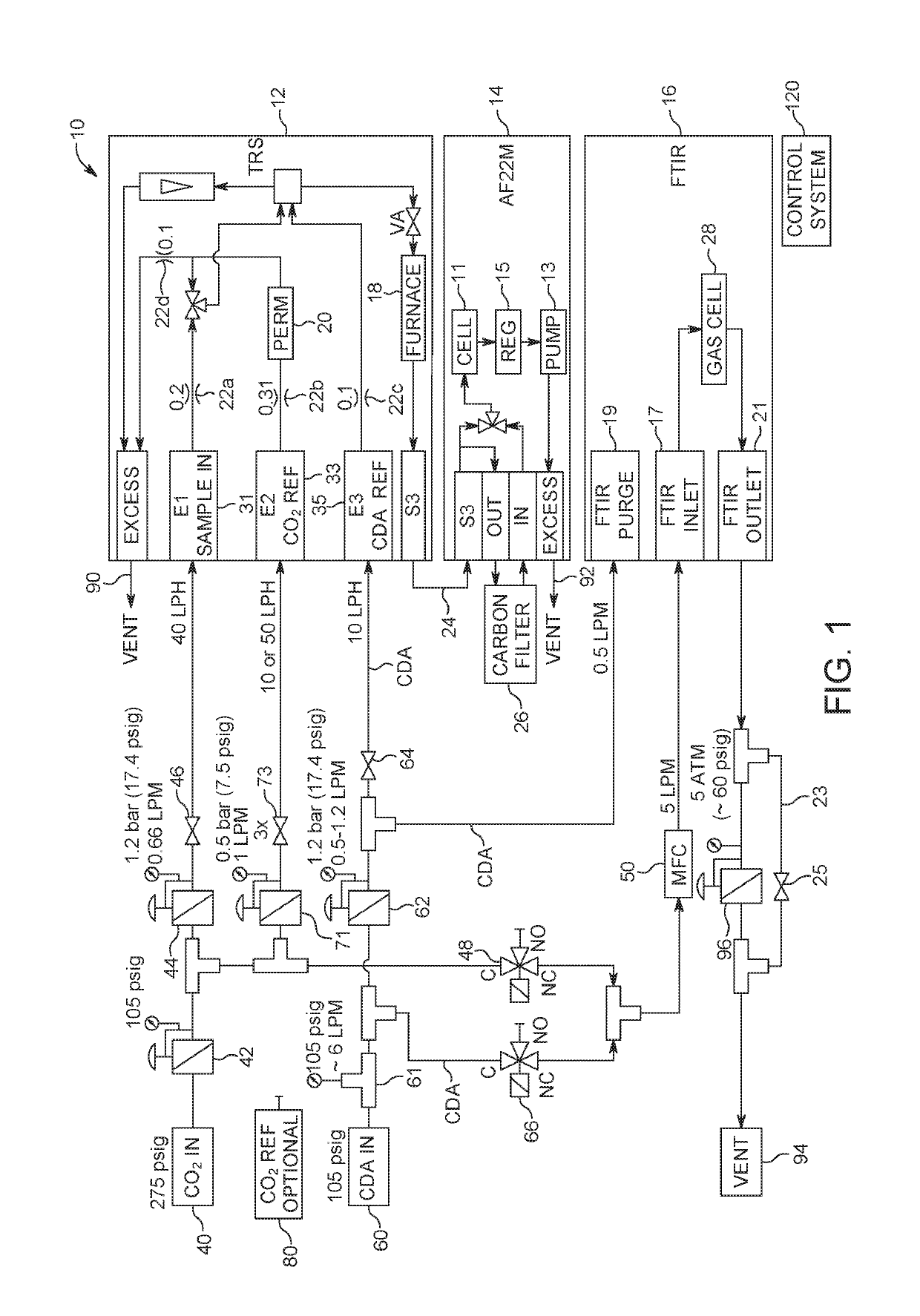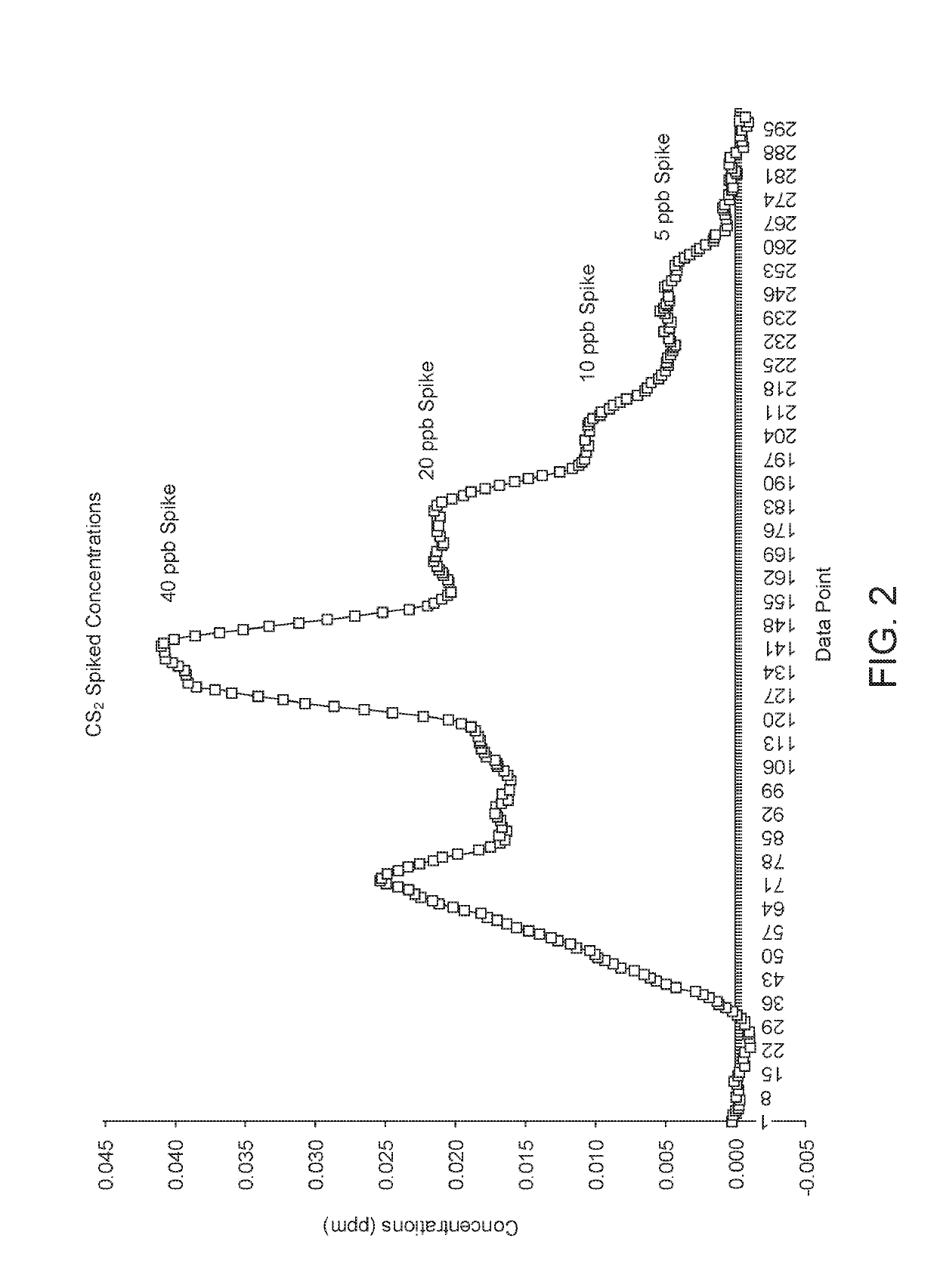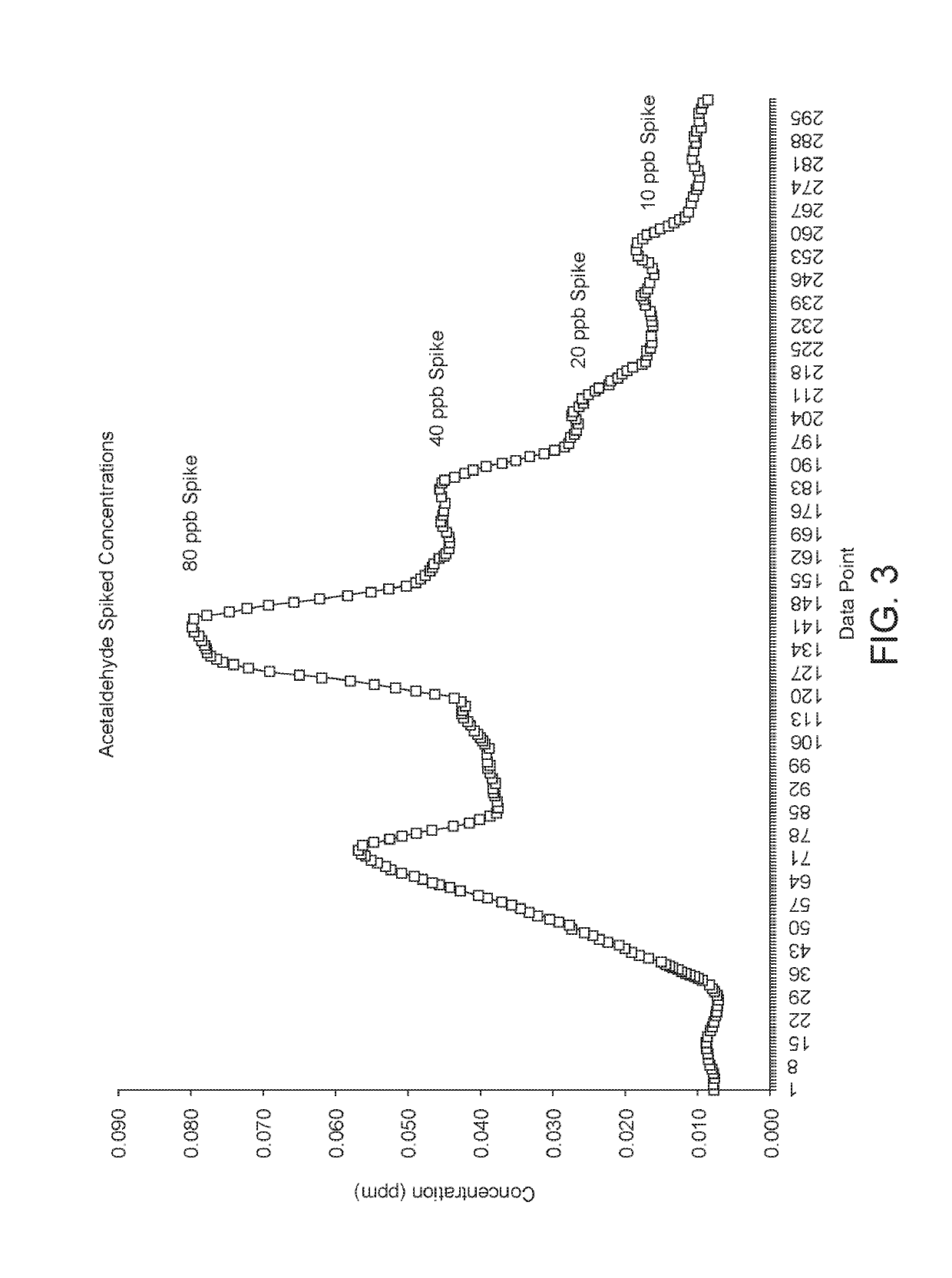System and method for impurity detection in beverage grade gases
a technology of impurity detection and beverage grade, applied in the direction of fluorescence/phosphorescence, instruments, material analysis, etc., can solve the problems of slow gc system, frequent maintenance, cross interference and calibration problems, etc., to achieve less calibration, faster measurement time, and lower mdls
- Summary
- Abstract
- Description
- Claims
- Application Information
AI Technical Summary
Benefits of technology
Problems solved by technology
Method used
Image
Examples
example
[0076]In this example (referencing FIG. 1), the FTIR is provided with three sample options: (1) off: (2) zero: and (3) sample. The FTIR is controlled by a multi gas software suite such as, for example, the MG2000, reporting to a suitable display software via an AK Interface, for instance. Two solenoid valves (elements 48 and 66 in FIG. 1) and a mass flow controller (MFC 50 in FIG. 1) control sample stream selection and flow rates. When the instrument is in the “off” sample selection, both valves are closed and no gas reaches the FTIR 16. In the zero sample selection, the CDA or nitrogen valve 66 is opened and the MFC 50 is set to a suitable flow rate such as, for example, 5,000 standard cubic centimeter per minute (sccm). After purging the system (e.g., for 10-15 minutes) a new background can be taken in the MG2000 software. This background allows a clean reference single beam for comparison to new sample data.
[0077]The instrument is then placed in sample mode, the nitrogen valve 66...
PUM
| Property | Measurement | Unit |
|---|---|---|
| pressures | aaaaa | aaaaa |
| path lengths | aaaaa | aaaaa |
| path lengths | aaaaa | aaaaa |
Abstract
Description
Claims
Application Information
 Login to View More
Login to View More - R&D
- Intellectual Property
- Life Sciences
- Materials
- Tech Scout
- Unparalleled Data Quality
- Higher Quality Content
- 60% Fewer Hallucinations
Browse by: Latest US Patents, China's latest patents, Technical Efficacy Thesaurus, Application Domain, Technology Topic, Popular Technical Reports.
© 2025 PatSnap. All rights reserved.Legal|Privacy policy|Modern Slavery Act Transparency Statement|Sitemap|About US| Contact US: help@patsnap.com



